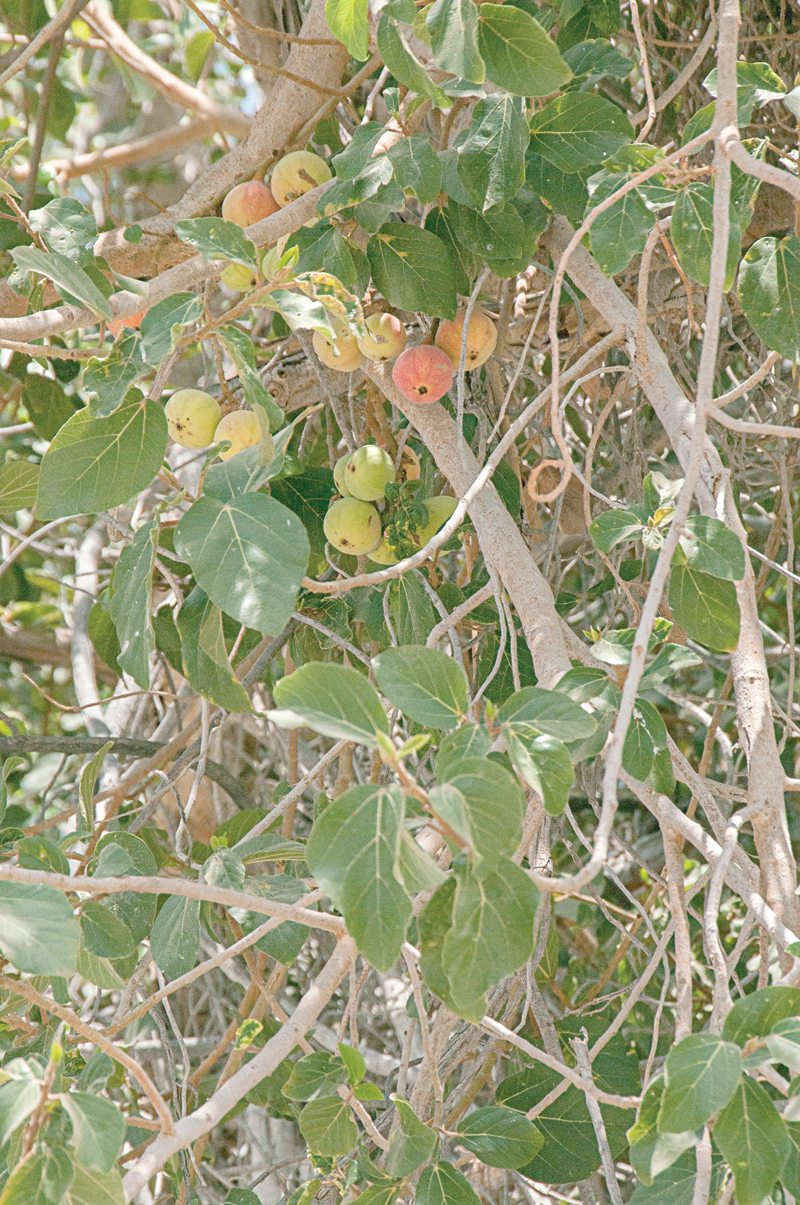

TEXT & PHOTOS BY: YAHYA ALSALMANI
It is well-known that Omanis have great interest in agriculture, especially in planting trees and plants as a natural means of combating desertification, aridity and shortage of water resources. Traditionally, they have taken care of trees as they believe that trees and plants are a bounty, from which they derive a lot of benefits.

The Wilayat of Al Rustaq is home to one of the perennial Omani trees — ‘Ficus Sycomorus’ which is locally called ‘Suqam’. Villagers told the Observer that “the tree is more than 300 years old”. It grows near wet areas and hence can be seen near the wadis and aflaj (the traditional irrigation system).
Environmental studies mention that the tree belongs to the Moracease family. It is very huge and its height can reach up to 12 metres. The tourists who enjoy hiking and bashing in wadis spend some time under its shade to enjoy nature and its delicious fruit.
After a certain age, the leaves of this perennial tree wilt and their stems become brittle. People of the village still spend their spare time under the tree enjoying the shade and fresh air. “The tree, with its shade and fruits, gives us nice ambience for our gatherings. Usually we meet here during the daytime, chatting and discussing all matters related to our daily life”, locals said.
The tree, mostly found in the northern and southern governorates of the Sultanate, is respected by the local people as they consider it as one of the unique natural resources of the environment. They called for measures to preserve such natural resources.
Studies indicate that the tree has been widely cultivated in the Arab countries and it is a sustainable green tree. One of the oldest trees was found in North Cairo (Egypt), and it is about 2,000 years old. It is well-known since the ancient times. Sources indicate that it was called the “Sacred Tree” because “Virgin Mary took shelter under the shade of this tree with Prophet Jesus during their travel in Egypt”. Furthermore, as it has reference in the Bible then, it became a symbol of protection and hope for the Americans as well.
Environmentally, it works to purify the air as it releases a large amount of oxygen. Its branches spread horizontally and the leaves resemble those of a fig. The tree has several health benefits. Scientific studies have proved that its fruit is a natural disinfectant for the gut, and helps treat many diseases of the digestive system. Sources say that it is also a natural remedy for constipation and intestinal flu, and its fruits help stimulate the nervous system. It has great importance in treating gum infections and dental problems, in addition to reducing mood swings, anxiety, tension, nervousness and depression. The fruit contains nutrients that treat anemia and give relief from scorpion stings and snake bites.
Making use of its health and environmental benefits, Omanis of various wilayats consider the tree as a natural heritage.
Oman Observer is now on the WhatsApp channel. Click here



